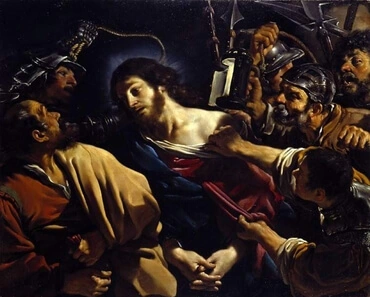Explanation of John 1:9
By Brian David

When we hear the word "truth," we tend to think of statements that are rather cold, dry and academic. That kind of truth, however, is a form taken to the most specific, external levels; at its heart truth is simply an expression of love, and the closer it is to that love the more dynamic, warm and creative it is.
Think, for instance, of a beautiful picture sent from one person to another through computers. The first person sees the picture, is moved by it, and wants to share it. The computer analyzes that picture as millions of tiny colored dots that can be expressed mathematically, information that can be shared. The second person’s computer gets that information, puts all the colored dots together and shows the picture so the second person can be moved as well. In the eyes of the two people, that picture is a relatively internal truth, a pretty direct container for specific feelings. In between, broken into tiny bits of information, that picture is still a truth - it still exists - but it is in much more external form, further removed from the emotional content.
The uiltimate "emotional content" is, of course, the Lord’s love, so perfect and powerful that we can only picture it by imaging a walk on the sun. It’s immediate expression is "the light" in this verse - what the Writings call divine truth. It’s like taking that pretty picture and multiplying it to the zillionth degree, until it’s so beautiful it knocks us from our feet and forces us to shield our eyes. It is the expression on the Lord’s face, if we could stand seeing it; it’s like the sound of His voice if we could stand hearing it. That picture is truth - it is a way of sharing internal states at the most extreme, exquisite level.
So how can we tap into that? How can we bring that kind of truth into our lives? The answer is that we need to be "the world," finding the light in "every man." The world represents the church, which the Writings define as "where the Lord is known and where the Word is." We have the Word, in the form of the Bible; knowing the Lord is up to each of us as an individual. "Man" here represents truth on a more external level, expressions of the Lord’s love broken down into ideas that can be applied to our lives.
What this verse tells us, then, is that if we read the Bible with the Lord’s love in mind, we will find ideas and guidelines that will lead us to be good, loving people. We can connect with the divine truth and get it in little bits that we can use.
(References: Apocalypse Explained 196; Arcana Coelestia 9407 [13])
Arcana Coelestia #3439
3439. 'I am the God of Abraham your father; do not fear, for I am with you' means that the Divine also was present there, that is to say, in the literal sense of the Word. This is clear from the representation of 'Abraham' as the Lord's Divine, dealt with in 2833, 2836, 3251, 3305 (end). Consequently 'Jehovah the God of Abraham' means the Lord's Divine, which 'Abraham' represents. And as the subject is the Word, which also is the Lord since the whole Word comes from Him and the whole of the Word has reference to Him, 'I am the God of Abraham; do not fear, for I am with you' therefore means that the Divine also was present there. With regard to the Divine presence in the Word the position is that the Divine itself is present in the highest sense of the Word because that is where the Lord is. The Divine is also present in the internal sense because that is where the Lord's kingdom in heaven is, and therefore that sense is called the celestial and spiritual. The Divine is also present in the literal sense of the Word because that is where the Lord's kingdom on earth is, and therefore that sense is called the external and also the natural, for this sense contains crude appearances that are quite remote from the Divine, though every single thing there is nevertheless Divine. Those three senses are related to one another as parts of the tabernacle are related. Its inmost part, or that inside the veil where the ark containing the testimony stood, was the most holy place or the holy of holies; the internal part, or that directly outside the veil where the golden table and the lampstand stood, was the holy place; while the external part, where the court was situated, was also a holy place. This was where all the people met, and therefore it was called 'the Tent of Meeting'.






